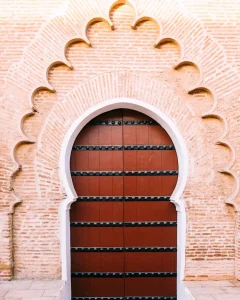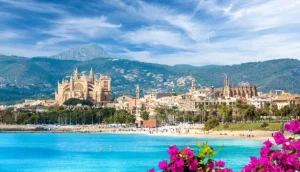Discover the essence of **Culture** and **Architecture of Mallorca**, where history comes alive through its imposing monuments and the uniqueness of its architecture. On this Mediterranean island, every corner tells a fascinating story, from ancient fortresses to majestic cathedrals that dominate the horizon. Immerse yourself in a journey through time as you explore Mallorca’s rich architectural heritage, reflecting the influence of various cultures that have left their mark on this Balearic paradise.
The Architecture of Mallorca
Mallorca’s architecture reflects the island’s rich history and the various cultural influences that have shaped it over the centuries. From Roman times to the present day, Mallorca has witnessed a variety of architectural styles that have left an indelible mark on its urban landscape. Some of the most predominant styles include:
- Roman: Roman remains, such as the ruins of the city of Pollentia in Alcúdia, show the Roman presence on the island and its influence on architecture.
- Gothic: The Cathedral of Santa María de Palma, commonly known as Palma Cathedral, is a magnificent example of Gothic architecture, with its tall spires and ornamental details making it one of Mallorca’s most iconic landmarks.
- Renaissance: Palaces such as the Palau de l’Almudaina in Palma showcase the elegance and refinement of Renaissance style, with its symmetrical lines and sculpted facades.
- Baroque: The church of Sant Francesc in Palma is a notable example of Baroque architecture in Mallorca, with its elaborate facade and exuberant decorative details.
These styles, along with others like Mudejar, Neoclassical, and Modernist, coexist harmoniously to create a unique architectural mosaic that defines the beauty of Mallorca.
Historical Monuments of Mallorca
The island of Mallorca is dotted with historical monuments that narrate its glorious past and rich cultural heritage. Among the most prominent are:
- Cathedral of Santa María de Palma: This imposing Gothic cathedral, built between the 13th and 16th centuries, is a symbol of sacred architecture in Mallorca. Its stunning rose window and tall towers make it a must-visit for history and architecture enthusiasts.
- Castell de Bellver: Perched on a hill overlooking Palma, the Castell de Bellver is a circular fortress dating from the 14th century. Its unique design and panoramic views make it an essential monument in Mallorca, offering visitors a glimpse into the island’s medieval past.
- La Almudaina: This fortified palace, located next to Palma Cathedral, has witnessed Mallorca’s history from the Arab era to the present. Its impressive walls and its Renaissance architecture make it an important landmark in the city.
These monuments, along with many others, are living testaments to Mallorca’s rich historical and cultural heritage, inviting visitors to delve into its fascinating past.
Mallorcan Art and Architecture
The fusion between art and architecture in Mallorca is evident in every corner of the island, where decorative elements and unique techniques intertwine to create a truly charming urban landscape. From the intricate stained glass of Gothic churches to the sculpted stone details of Renaissance palaces, art has profoundly influenced Mallorcan architecture over the centuries.
In turn, architecture has provided a canvas for artistic expression, with sculptures, frescoes, and murals adorning historical buildings across the island. This symbiosis between art and architecture results in a visually stunning experience that captivates both visitors and residents, highlighting Mallorca’s rich cultural heritage.
The Influence of Cultures on Mallorcan Architecture
The architecture of Mallorca is the result of centuries of cultural influences that have left an indelible mark on its urban landscape. From the Roman presence in antiquity to the Arab influence during the Medieval period and the arrival of the Catalans in the Modern Age, each culture has left its imprint on the island’s architecture.
Roman remains, such as baths and aqueducts, attest to the Roman presence in Mallorca, while Mudejar architecture reflects the Arab influence on the island. Renaissance palaces and Gothic churches, on the other hand, showcase the influence of Catalan culture in Mallorca during the Modern Age. This rich blend of cultures translates into unique and diverse architecture that is a testament to the rich historical and cultural heritage of Mallorca, attracting visitors from around the world to explore its fascinating past.
Preservation and Appreciation of Architectural Heritage
The preservation of Mallorca’s architectural heritage is vital for maintaining the island’s historical and cultural richness. These historical monuments are testimonies of past eras and are important landmarks that attract tourists from around the world. Proper conservation of these sites ensures that future generations can enjoy and learn from Mallorca’s history. Additionally, promoting cultural tourism contributes to the local economy and fosters greater appreciation for the island’s architectural heritage.
The Everlasting Essence of Mallorca
In summary, **Mallorca’s culture** and **architecture** are invaluable treasures that reveal the island’s rich history and cultural diversity. From ancient Roman ruins to magnificent Renaissance palaces, each structure tells a fascinating story about Mallorca’s past and its evolution over the centuries.
The preservation and appreciation of this architectural heritage enrich the visitor experience and strengthen the local residents’ sense of identity and pride. In other words, the beauty and architectural diversity of Mallorca are living witnesses to its cultural and historical relevance, continuing to captivate those who have the privilege of exploring this charming Mediterranean island.
Don’t wait any longer to visit these architectural gems and stay in our vacation accommodations in Mallorca, in locations such as Santa Margalida or Son Serra de la Marina. And let yourself be amazed by Mallorca’s architecture and culture!



